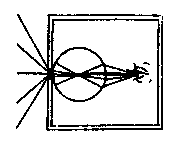 CHArt
CHArt  CHArt
CHArt Computers and the History of Art - 1999 Conference Paper Abstract
As it is well know fresco paintings must be executed on a wet plaster. The patch of plaster applied for a day's work is called giornata. The analysis of the overlapping of the plasters at the giornate s joins permits to obtain very important information. A study concerning the sequences of giornate through the definition of a mathematical model based on direct acyclic graphs (dag), and the realisation of a system software has been carried out. The information that this model can process is quite extensive and interesting. Other than providing a timely sequence, the model based on dag can: (1) identify eventual errors in the indication of the direction of the joins between the giornate; (2) simulate and elaborate the various interpretations (in the cases there is a lack of information); (3) improve the readability grouping together sub-sequences of selected giornate (clustering).
In fact when the frescoes are of very large dimensions, some considerations about the organisation of the work-site allow to gather additional information (the form of the giornate, their iconic content, their dislocation, etc.) with respect to the information obtained by examining the overlapping of their plasters. These considerations permit to cluster the giornate, in such a way that a group of them is recognised as one single giornata. Clustering can allow for a slimming down of the graph especially for frescoes made up of a large number of giornate. Clustering can be executed either on a small group of giornate or on a large group. These two possibilities involve a very different physic organisation in the lecture of the fresco execution and its graphic representation on the graph.
In this paper an application of the model based on dag, extended with the clustering techniques, to a particular case study, namely the ceiling of "S. Silvestro in Capite" church in Rome, painted by Giacinto Brandi (restoration directed by the Superintendency of Cultural Heritage of Rome), is presented. In this example it is shown as the application of clustering techniques produces some interesting results for a correct interpretation of execution of frescoes.